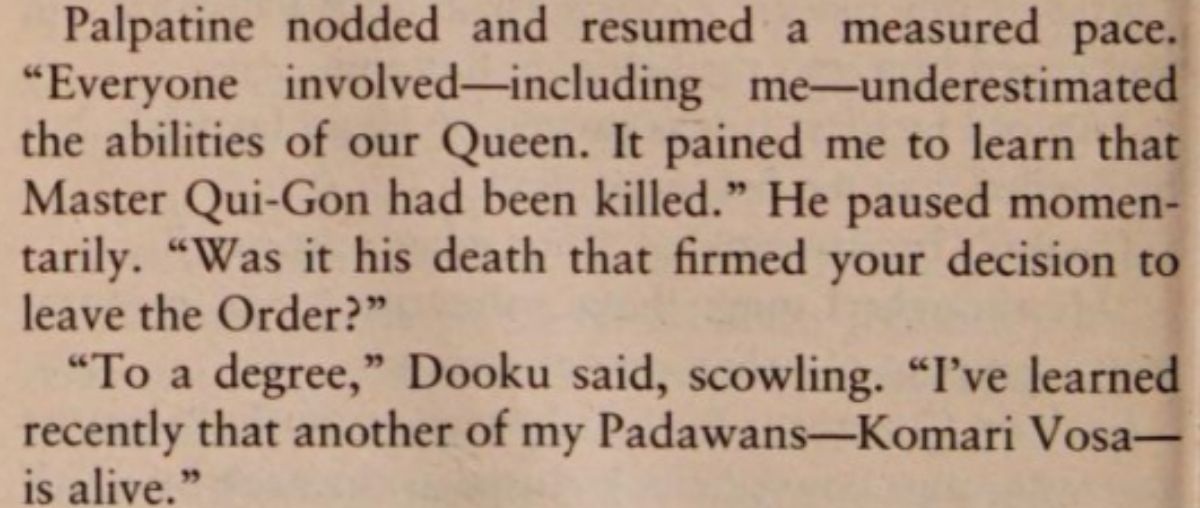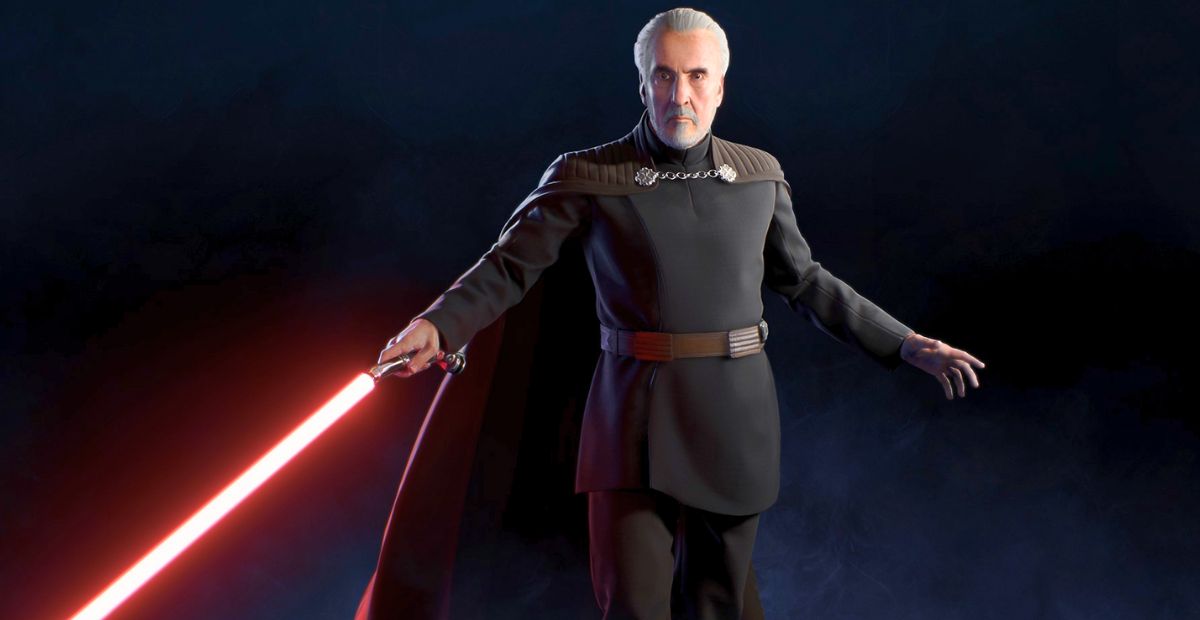One of the biggest questions Star Wars fans still ask ourselves is: when and why did Count Dooku abandon the Republic and turn his back on the Jedi Order? The simple answer we usually hear is that Dooku saw the corruption of the Republic, and that’s why he left.
But honestly, that feels too simple. As fans, we want something more specific, something that digs deeper into the man behind the title “Count of Serenno.” And luckily, we do have that answer. Today, I’m going to share exactly why Dooku turned to the dark side, straight from Yoda’s own perspective.
Yoda Reveals Why Dooku Turned to The Dark Side
First, it’s worth noting this answer doesn’t come from Star Wars canon, but from Legends. Specifically, it’s found in the 2005 novel Labyrinth of Evil by James Luceno.
In the book, there’s a quiet but revealing conversation between Obi-Wan and Yoda, set not long after the Battle of Geonosis. You’ll remember from Attack of the Clones that Dooku told Obi-Wan the Sith were controlling the Republic, even claiming the Senate was already under their influence.
Here, Obi-Wan presses Yoda further. He brings up a rumor he’s heard that Dooku had long been fascinated by the dark side, and even asks if the Count had once been involved in stealing a Sith Holocron from the Jedi Temple. Obi-Wan says:
“I’ve heard rumors about Dooku’s early fascination with the dark side. Was there not an incident in the Temple involving a stolen Sith Holocron?”
Yoda doesn’t dodge the question. Instead, he confirms it plainly:
“True that rumor is. But understand, Obi-Wan, a Jedi Dooku was, for many, many years. Difficult the decision is to leave the Order. Influenced he was by many things. The death of your former Master, for one even though avenged Qui-Gon was. Complicated this is. Not merely by what we know, but by what we do not know; what we have to assume.”

As for this, I have to pause for a bit. If we think back to Tales of the Jedi, we know Dooku was still part of the Jedi Order during the events of The Phantom Menace. After learning of his former apprentice’s death during the Naboo crisis, Dooku ultimately aligned himself with Sidious, killing Yaddle in the process. So maybe during that time, the Jedi began investigating his activities — and the rumor about his fascination with the dark side could have started circulating then.
The conversation in the book continues as Yoda admits to Obi-Wan, “Saw with my own eyes what he had become, and refused to believe it, I did.” Obi-Wan followed up by asking: “But how could Dooku have searched out Sidious? Or was it the other way around?” Yoda’s answer is simple but chilling: “Impossible to know. But accept Sidious as a mentor Dooku did.”

Based on Yoda’s answer, we can finally see one of the core reasons Dooku chose to leave the Jedi Order — the death of Qui-Gon Jinn. However, even Yoda, Dooku’s former Master, admitted he didn’t know whether Dooku sought out Sidious or if Sidious approached Dooku first.
To answer that question, we need to look into a different Star Wars story — and I’ll break that down in the next section. Keep reading to learn how Dooku was truly recruited by the Sith.
Dooku’s Making Decision to Leave the Jedi Order
We’ve heard Yoda’s side of the story — but what about Dooku himself? To get that perspective, we have to dig deeper. Luckily, Darth Plagueis novel gives us a clear window into Dooku’s mindset before he ever walked away from the Jedi Order.
In the novel, we see him speaking with Palpatine, back when neither of them fully knew the other’s true identity. Dooku’s frustration with the Jedi Council is already boiling over. He recalls a mission to Baltizaar, where the Council sent Jedi to fend off the Bando Gora — a mission Dooku clearly believed required military force, not Jedi diplomacy. His anger grows when he explains how his former Padawan, Komari Vosa, was involved, and how the Council refused to send reinforcements after the initial deployment. To Dooku, it was yet another example of the Council’s failure to act decisively.
Palpatine, ever the manipulator, steers the conversation toward prophecy and the dark tide rising in the galaxy. Dooku reveals his true feelings, that the Jedi could fulfill their destiny only if they were willing to unleash the full powers of the Force, something the Council would never dare. His patience has clearly run thin, and by the end of their talk, he makes his stance painfully clear:
“If one more Jedi dies because of indolence on the part of the Republic and moral equivocation on the part of the Council, I will leave the Temple and refuse to look back.”

And just to clarify the timeline: this early conversation between Dooku and Palpatine took place before the events of The Phantom Menace. So if we connect the dots, it becomes clear that after witnessing Qui-Gon’s death, Dooku finally made the decision to leave the Jedi Order.
Later, Palpatine directly addresses that moment with Dooku, saying: “Everyone involved — including me — underestimated the abilities of our Queen. It pained me to learn that Master Qui-Gon had been killed. Was it his death that firmed your decision to leave the Order?”
Dooku’s answer is simple but telling: “To a degree.”

That exchange confirms what Yoda hinted at earlier — that Qui-Gon’s death was one of the key emotional turning points for Dooku. But there’s more.
Toward the end of the Darth Plagueis novel, after Palpatine has killed his own master and fully embraced his role as a Sith Lord, he has another conversation with Dooku. This is where the rumor Obi-Wan once asked Yoda about — Dooku’s fascination with the dark side — is finally confirmed. Palpatine asks: “You wish to learn the secrets of the dark side?”
And Dooku responds: “I confess that I do.”
That moment marks Dooku’s true point of no return. What began as growing disillusionment with the Jedi slowly evolved into something more dangerous — a desire to explore the very power the Order forbade. Combined with Qui-Gon’s death, it was enough to push Dooku down the path that would turn him into Darth Tyranus.

